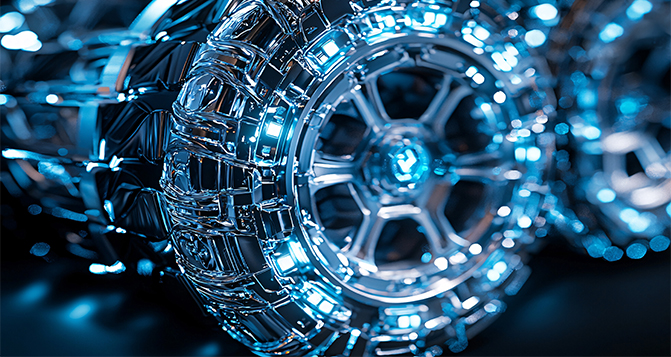When a city becomes famous for a scenery, a "new landscape" of new energy vehicles is quietly emerging - the wheel hub motor, an ancient technology that Porsche first tried in 1900, is returning to the center of the stage as a disruptor.

1、 Technical essence: The wheel is the power source
In Wheel Motor directly embeds the motor into the wheel hub, completely reconstructing the traditional power transmission chain:
Traditional system: engine → gearbox → driveshaft → differential → wheels
Wheel hub motor: battery → motor → wheel (zero mechanical transmission loss)
This "decentralized" design brings three revolutionary advantages:
Minimalist structure: eliminating transmission shafts and other components, reducing the weight of the entire vehicle by 10% -15%, freeing up space for battery expansion;
Manipulation Magic: Each wheel independently controls torque, achieving sci-fi level functions such as tank U-turn (360 ° rotation in place) and crab mode (lateral movement);
Energy recovery: When braking, the motor directly generates electricity, increasing energy recovery efficiency by 30% -40%, which is equivalent to "opening up sources and throttling" for endurance.
2、 Reality dilemma: the cost of technological aesthetics
Despite the stunning concept, wheel hub motors still face three major Achilles heels:
Non spring mass curse: The weight of the motor directly acts on the wheels, causing:
Increased tire bounce and decreased comfort
Slow suspension response and compromised handling accuracy
(Modern UniWheel attempts to integrate motors with braking systems, but the complex design offsets some of its advantages)
Environmental Durability Challenge:
The motor is directly exposed to water, snow, and salt spray, and the sealing requirements are 10 times higher than traditional motors
The road impact is transmitted directly to the motor through the tires, reducing the bearing life by 30% -50%
BYD's latest patent adopts "magnetic levitation isolation" technology, but the cost has increased by 40%
Security concerns:
High voltage cables rotate with the wheels, and there is a risk of electric shock when they fall off
Repair requires dismantling tires, which is three times the labor cost of traditional motors
3、 The Road to Breakthrough: Technological Evolution and Scene Adaptation
The industry is breaking through bottlenecks through three paths:
1. Material Revolution:
Carbon fiber wheel hub+silicon carbide motor (weight reduced by 25%, impact resistance increased by 2 times)
Tesla's latest patent shows that its wheel hub motors use "liquid metal bearings" with a lifespan exceeding 500000 kilometers
2. Architectural innovation:
Distributed electronic architecture (such as Rivian's "wheel hub motor+wire controlled steering" combination)
Huawei's "Three in One" solution integrates the motor controller with the wheel hub motor, reducing the size by 40%
3. Scene focus:
Commercial vehicles: Logistics vehicles/sanitation vehicles have become the best testing ground for wheel hub motors due to their low-speed and heavy-duty characteristics (Yutong has already produced 2000 units)
Special vehicles: Lunar rovers and polar exploration vehicles highlight the reliability advantage of wheel hub motors due to extreme environmental conditions
4、 Future vision: from "technical spare tire" to "mainstream solution"
The true explosion of wheel hub motors requires three conditions:
Cost turning point: When large-scale production reduces costs to within 1.2 times that of traditional systems (expected by 2027)
Standardization: Establishment of industry standards for high-voltage connections, thermal management, etc
Scenario breakthrough: The rigid requirement for redundant drive systems in L4 level autonomous driving

